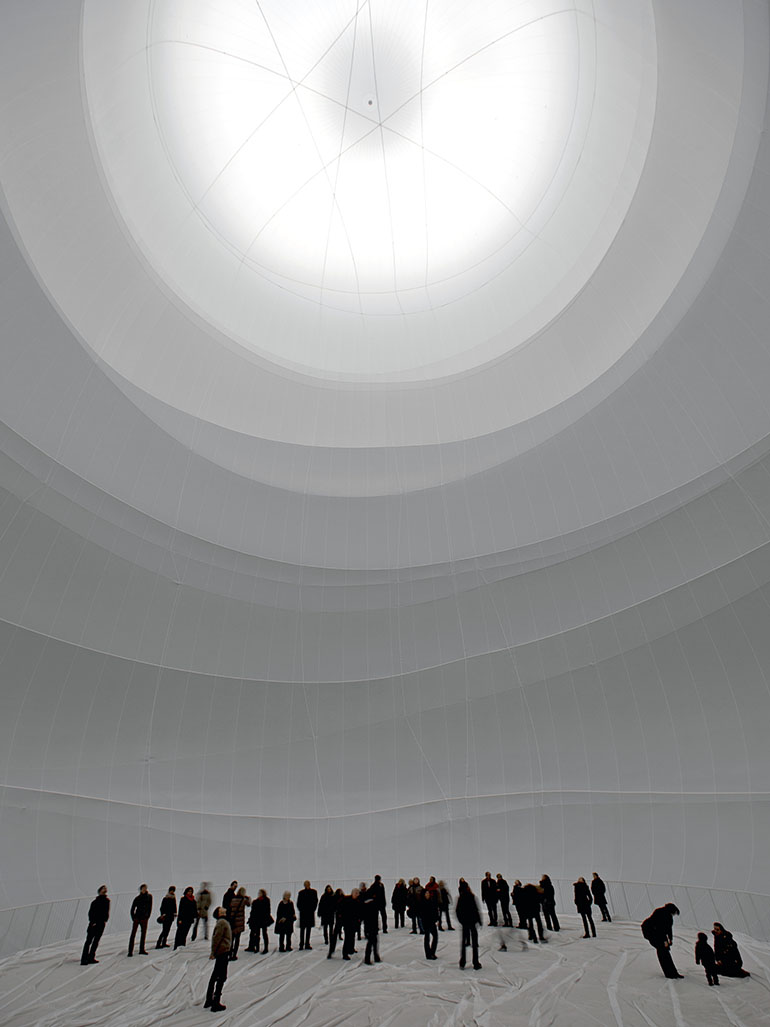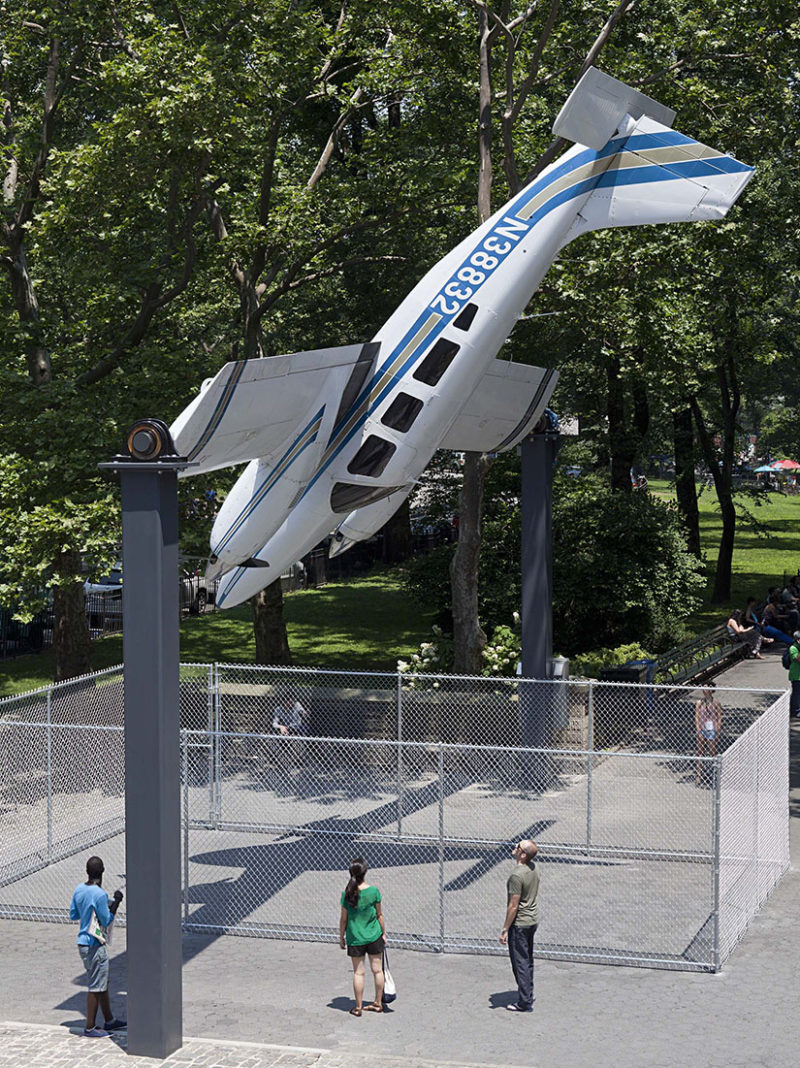
Permanently closed
This kinetic sculpture was on display from June 20 to August 26, 2012.
About How I Roll
For two months, a small airplane was rotating 24 hours a day in summer 2012 in Central Park 1, New York 2. Previous works by Paola Pivi 3 have also featured large machines, including an overturned tractor-trailer and a helicopter placed upside down.
How I Roll by Paola Pivi, situated at the Doris C. Freedman Plaza, marked the intersection of Fifth Avenue and 60th Street with its distinct presence. The 1977 Piper Seneca, a twin-engine six-seater aircraft, was mounted on two vertical steel poles, creating a juxtaposition against Central Park’s natural greenery and the urban skyline of New York City’s Upper East Side.
The setup allowed the airplane to rotate continuously 360-degrees, captivating passersby with its dynamic and unexpected aerial ballet in a bustling urban setting.

Born in Milan, Italy, in 1971 and now based in Anchorage, Alaska, Paola Pivi’s diverse artistic practice embraces sculpture, photography, video, and performance. How I Roll is Pivi’s first public commission in the United States.
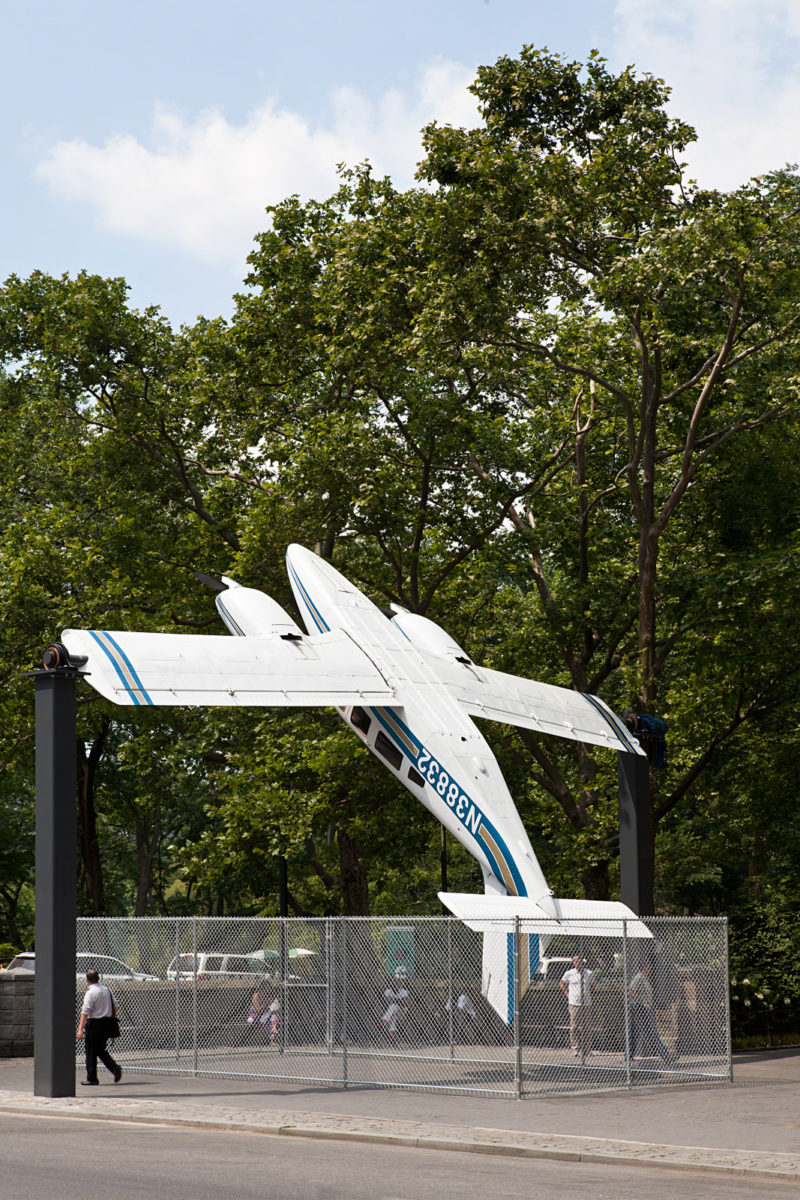
The meaning of the artwork
Nicholas Baume, director of the Public Art Fund, explains the artwork’s meaning and its relationship to the birth of modernism by recalling a story when modern art pioneers Constantin Brancusi, Marcel Duchamp 4, and Fernand Léger 5 visited the 1912 Paris Air Show together. When examining a propeller, Brancusi said:
Now that is what I call sculpture!
This anecdote, referenced in relation to Pivi’s work, bridges a century-long dialogue between modernist artists and industrial objects. It situates the rotating airplane within a lineage of artistic fascination with industrial aesthetics, underscoring the enduring relationship between artistic expression and industrial innovation.
According to Baume, Pivi’s installation signifies that a romance between modernist artists and industrial design can now, one hundred years later, still produce remarkable visual poetry.
Airplanes are a recurring motif in Pivi’s work. In 1999, she showed a flipped 11,8 meter long Fiat G-91 fighter at the Venice Biennale 6, curated by Harald Szeemann. This work won Pivi the Golden Lion award for best national Pavilion. Untitled (Airplane), 1999, later traveled her 2006 solo exhibition at the Trussardi Foundation.
How I roll also references an earlier work of Pivi, a 16 meter long overturned truck, created in 1997 and called Camion.
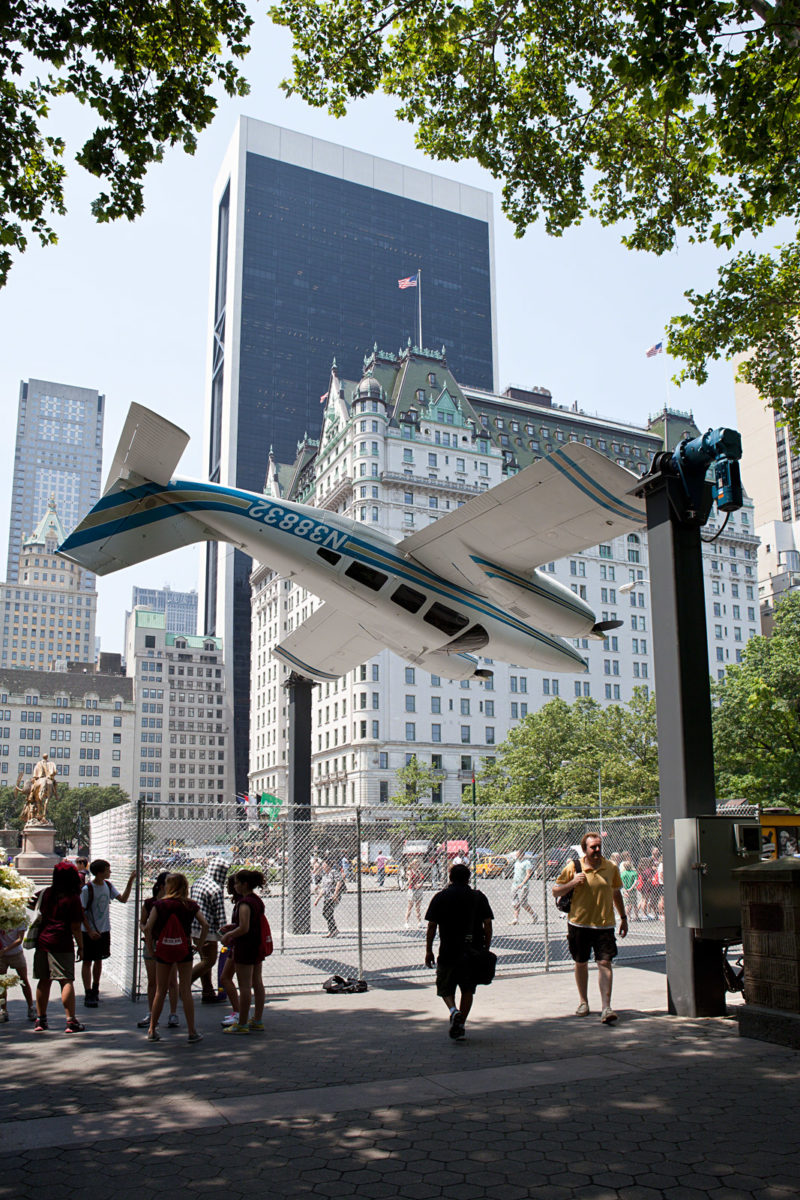
Influence & conceptual background
How I Roll resonates with a conceptual matrix deeply rooted in Marcel Duchamp’s philosophies, reflecting influences possibly drawn from her engineering background. This artwork encapsulates her ecumenical and globetrotting spirit, evident in her choice of a commonplace object—a Piper Seneca airplane—and its transformation into a rotating spectacle at the heart of New York City.
Pivi’s work embodies a Duchampian approach, combining scientific detachment with artistic whimsy, fostering a unique dialogue between everyday industrial objects and their new, surreal contexts.
Public reaction
How I Roll provided an unexpected encounter with a familiar object, engaged in an unfamiliar, slow, controlled motion. Pivi’s placement of the aircraft in an unconventional public space challenged viewers to reconsider the object’s function and its relationship to its surroundings.
Analysis
Paola Pivi’s artistic philosophy, characterized by transforming familiar spaces into realms of surprise, is vividly reflected in How I Roll. Her history of performance art is marked by a series of interventions that shift highly engineered objects from their conventional contexts into striking art pieces.
Prior works include an overturned tractor-trailer, an upside-down helicopter, and other installations that disrupt the normative functions of spaces. By redefining spatial possibilities, Pivi challenges viewers to reconceptualize the relationship between art and its environment, making each space a canvas for reimagining reality.
An early ending
Since June 20, the inauguration date, the installation has been active at the Doris C. Freedman Plaza, the corner of 5th Ave and 60th St in Central Park. It was set to rotate non-stop until August 26. However, due to a rainstorm on July 18, the airplane began turning much slower.
The artist and the Public Art Fund determined that a repair was needed and removed the airplane. Back in the studio, they found that it would take several weeks to fix and test the complex structure, meaning that the plane would be patched by late August. Therefore, the project stopped earlier than expected.
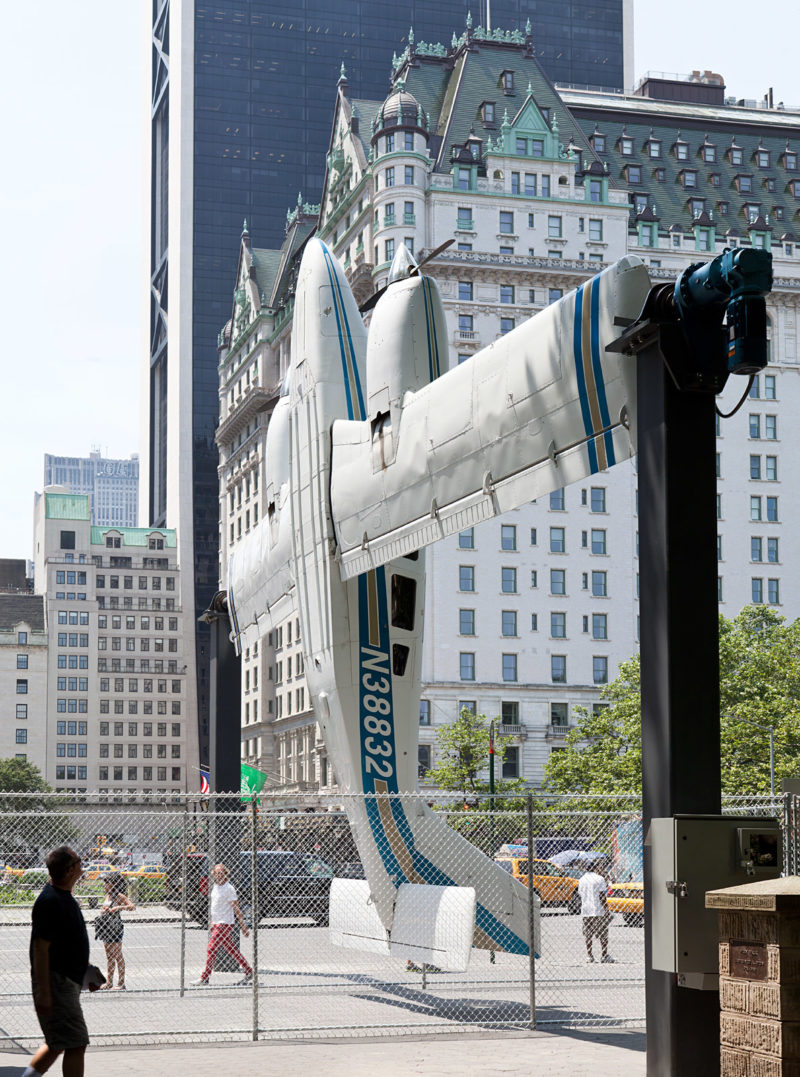
Former location of How I Roll in New York
Doris Freedman Plaza in Central Park
Lenox Hill, New York, NY 10019
